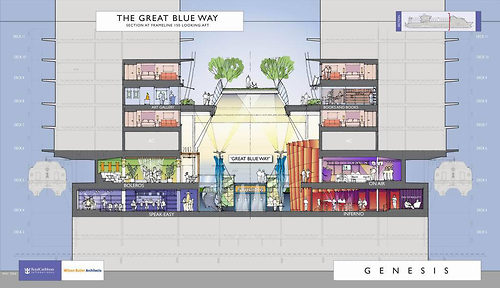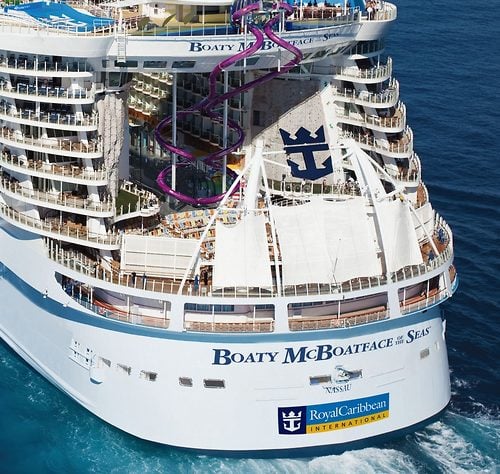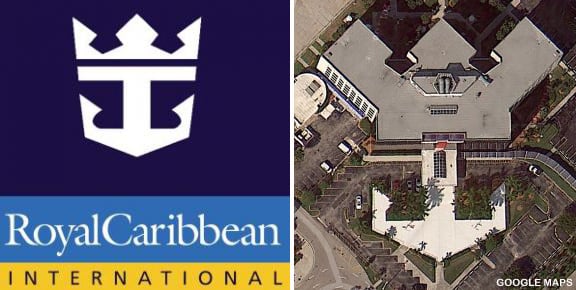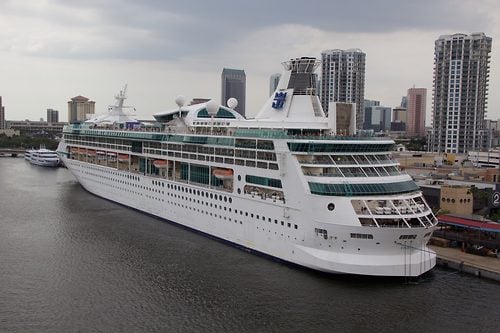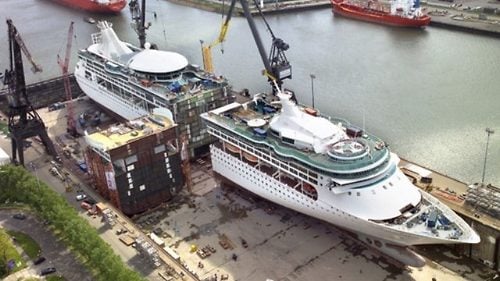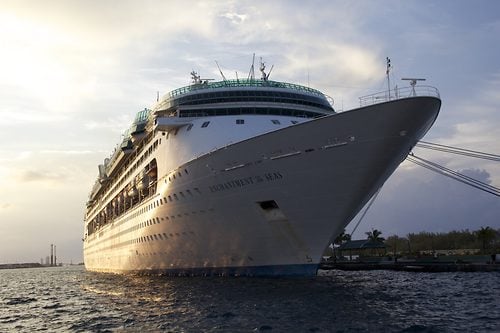8 ways Royal Caribbean changed the cruise industry
In:Royal Caribbean is celebrating its 50th birthday this year and with a milestone of that magnitude, it seems fitting to review the cruise industry firsts that figuratively put Royal Caribbean on the map.
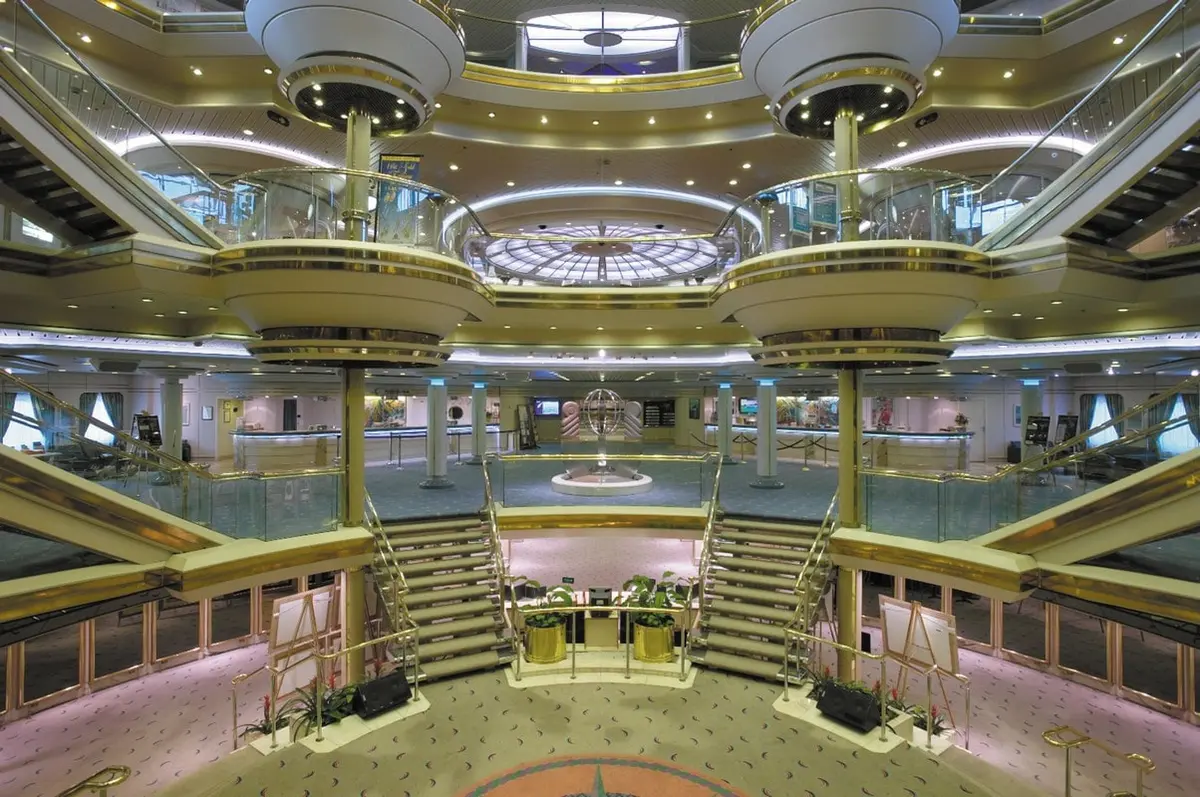
Innovation is a byproduct of competition among the cruise lines, and Royal Caribbean has brought about a number of changes to its ships with the goal differentiating it from other cruising choices that have since set the new standard for what guests expect onboard. As guests, we love seeing what Royal Caribbean comes up with next. It is what makes the cruise line different, special and most importantly, a heck of a lot of fun.
Here are our list of the top eight innovations Royal Caribbean brought about that have since changed the cruise industry.
1. First ship built for warm-weather cruising
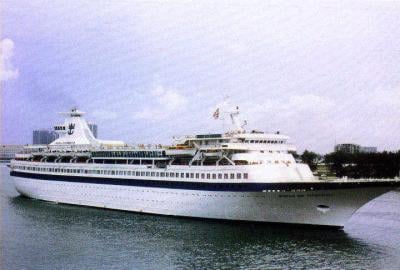
In 1970, when the fledgling cruise line launched Song of Norway, it was the first ship designed specifically for warm-weather cruising. By launching cruises from ports in south Florida and the Caribbean and flying passengers in from cities in the North, Royal Caribbean allowed its passengers to spend more time cruising in warm weather than would have been the case had the cruise originated in New York or Boston.
Prior to the launch of Song of Norway, cruise ships were built for point-to-point ocean transportation with significantly less open space.
The design of the Song of Norway was unique in a number of respects, not the least of which was its Viking Crown cocktail lounge cantilevered from its smokestack. Today most Royal Caribbean cruise ships feature a Viking Crown Lounge. The Song of Norway was also notable for its open pool and lounging area, which since has become an industry standard.
2. World’s first “Megaship”
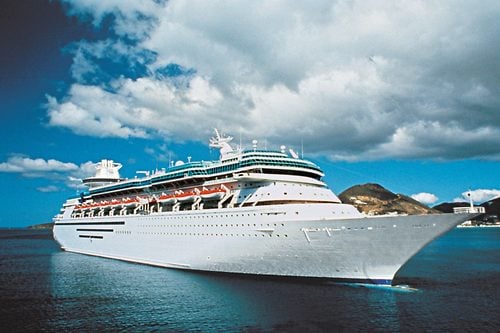
We take for granted today the variety of amenities and activities available on cruise ships, but Royal Caribbean invented the category of a megaship with the launch of Sovereign of the Seas in 1988.
At 73,192 tons, the ship featured a five-deck Centrum, glass elevators, fountains in marble pools, and sweeping staircases.
Sovereign of the Seas demonstrated that it is possible for a modern cruise ship to offer a balance of beauty and function and be something more than a container carrier or a ferry.
3. Ice skating and rock climbing walls
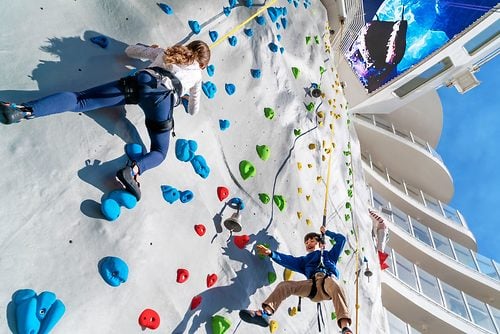
Historically, cruise ships were built following the model set forth by ocean liners of the classic period of transportation. These ships were designed to be a floating hotel that offered rest, relaxation and a great view. But as times changed, guests wanted to do more onboard and have a greater variety of choices with it.
The launch of Voyager of the Seas in 1999 added the first ice-skating rink at sea, as well as the first rock climbing wall at sea.These were onboard activities that was previously not available on a cruise ship. More importantly, it introduced the concept of guests being able to do physically activities onboard that were never considered previously.
The rock climbing wall became incredibly popular with guests and was expanded to all ships in the fleet, becoming a staple of a Royal Caribbean cruise experience.
4. Flowrider
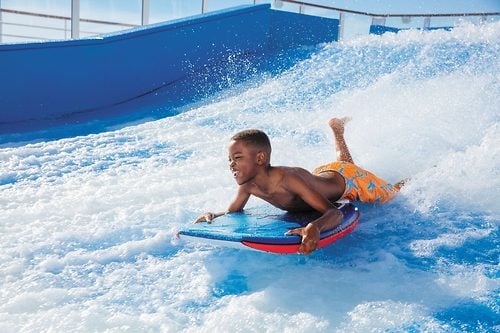
With guests demonstrating an appetite for signature activities to enjoy onboard, Royal Caribbean added the first surf simulator at sea in 2006 when Freedom of the Seas debuted.
Similar to a lap pool, it creates waves and simulates current by passing 30,000 gallons of water over the ride surface.
The addition of a Flowrider was a cruise industry game-changer, because it offered more for families to do onboard.
Freedom of the Seas also introduced the first full-size boxing ring at sea, which was inaugurated by Roberto Duran and Joe Fraser.
5. Oasis of the Seas
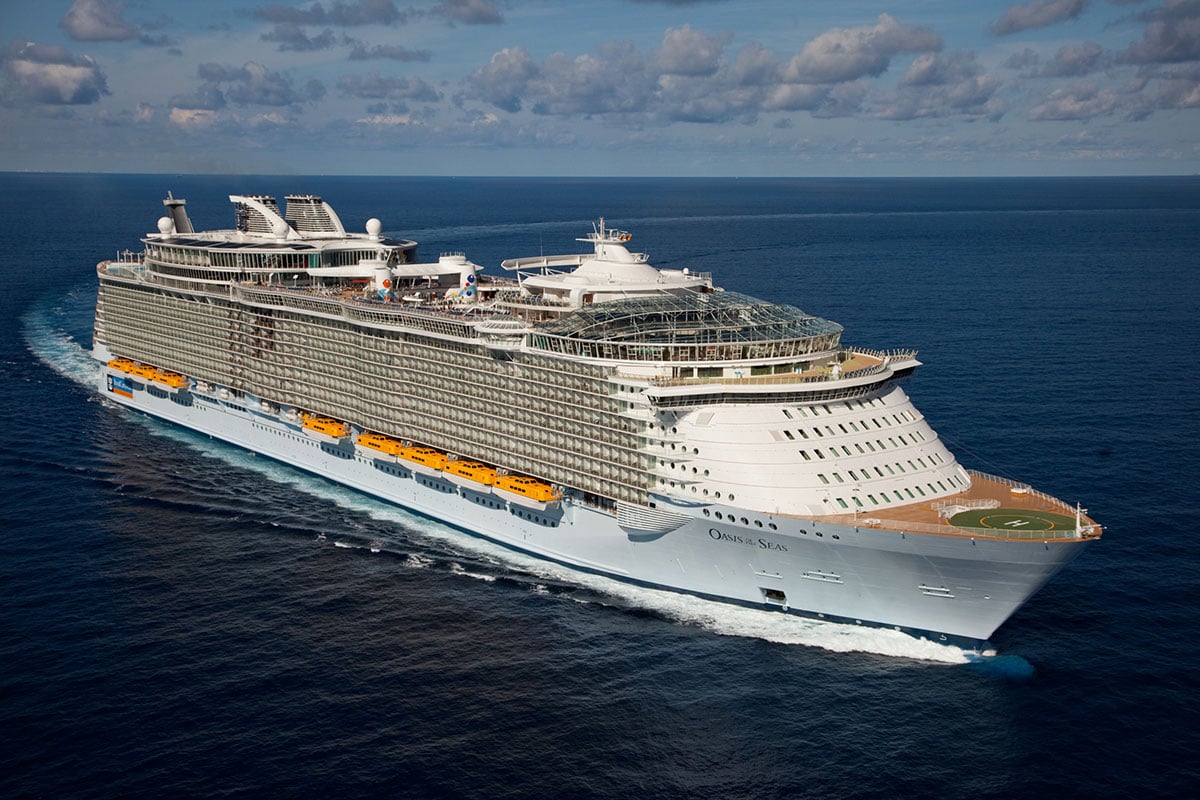
Perhaps no cruise ship in modern times has done more to change up the cruise industry than Oasis of the Seas did in 2009.
Oasis of the Seas introduced so many industry firsts and shifts in the cruise ship experience, including offering seven distinct neighborhoods, the first AquaTheater at sea, the first zip line at sea and an entire park filled with 12,000 plants.
Not only was Oasis of the Seas the largest cruise ship in the world when she debuted, her sister ships still sit atop the pantheon of largest cruise ships in the world to this day.
6. World's first smartship
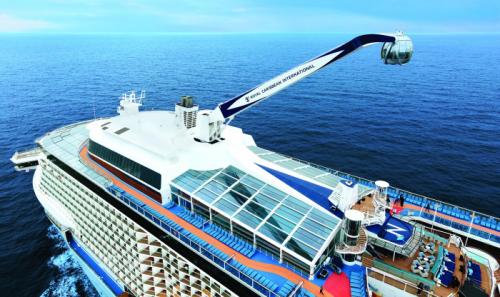
When you introduce a ship like Oasis of the Seas, how do you outdo that accomplishment? The Quantum Class set to do just that.
Quantum of the Seas debuted in 2014 and brought forth a number of firsts, including the distinction of being the world's first smartship that integrated technology in a way cruise ships had never seen before. Chief among those accomplishments was true high-speed internet, that allowed guests to use the internet onboard in the same way they would on land, and at a fraction of the cost that onboard internet had traditionally been charged.
Quantum of the Seas also introduced North Star, RipCord by iFly, the Bionic Bar and the SeaPlex. These venues continued the tradition of innovation Royal Caribbean had made a name for itself in years past.
7. Tallest slide at sea
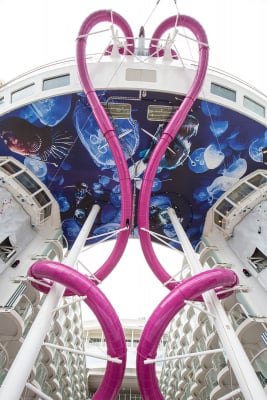
When Royal Caribbean announced Harmony of the Seas would feature the tallest slide at sea, a lot of people too notice.
The Ultimate Abyss set the record for being the tallest slide at sea, with a ten story plunge that begins 150 feet above sea level. The Ultimate Abyss is a pair of side-by-side 100 ft- high slides that guests can ride down multiple decks of the ship.
Royal Caribbean commissioned Spark Cooperative to push the envelope of what a cruise ship can contain and build on the cruise line's innovative reputation with a brand new, thrilling experience.
The end result was a slide experience that offers multi-sensory channels, including spontaneous audio effects, bespoke ride mats and custom uniforms and accessories. The attraction is designed to thrill guests while maintaining a sense of heart-pumping anticipation.
8. A new kind of private island

Appropriately enough, in the same year Royal Caribbean is celebrating its 50th anniversary the cruise line revamped its private island in the Bahamas that has become the new gold standard in what a private island experience is all about.
Perfect Day at CocoCay officially opened in May 2019 and boasted the tallest waterslide in North America, the highest vantage point in the Caribbean, the largest wave pool in the Caribbean and the largest freshwater pool in the Caribbean.
The Perfect Day at CocoCay makeover blends a combination of relaxation and adventure with plenty of space to enjoy time at the beach or pool, along with a waterpark, cabanas, helium balloon and more.
Your thoughts
Which innovations do you think Royal Caribbean deserves recognition for the most? Is there something that stands out in your mind? Tell us about in the comments.



